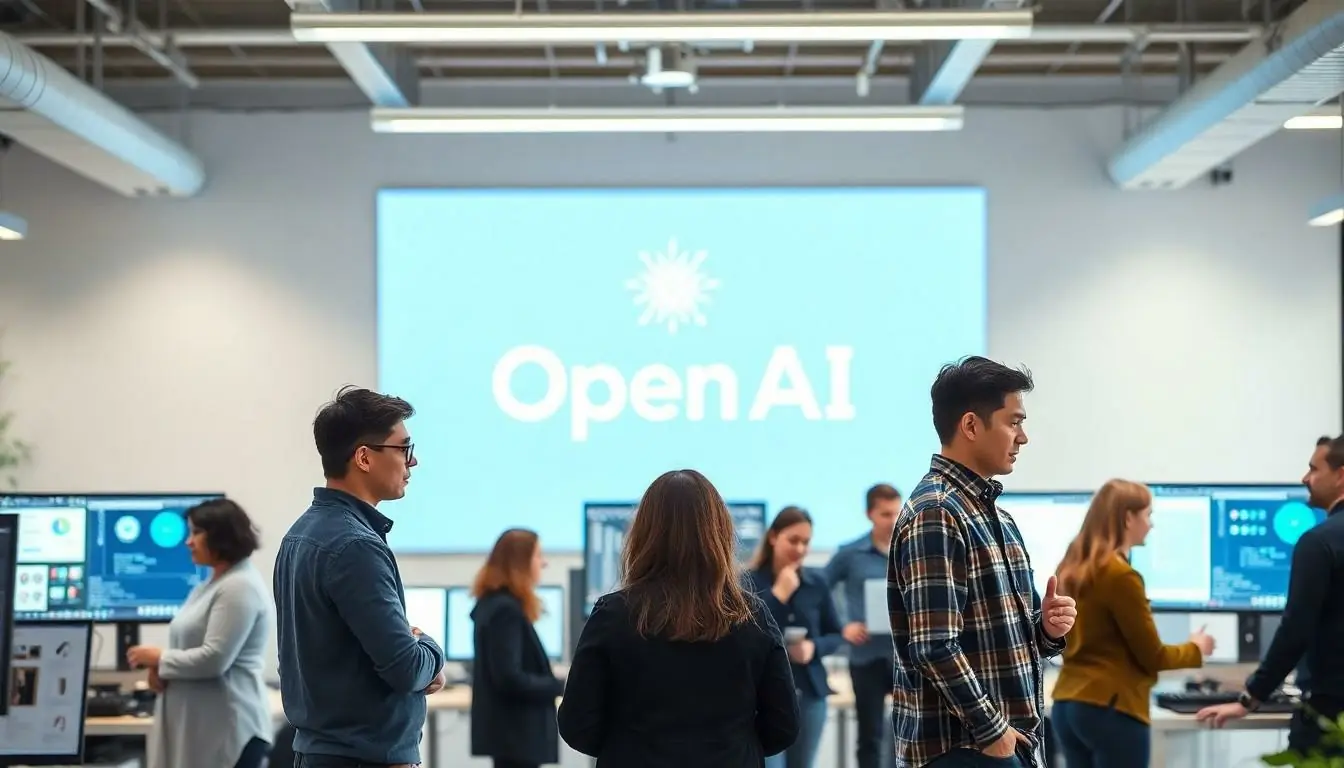In a world where AI is becoming the new best friend, understanding the difference between ChatGPT and OpenAI is like knowing the difference between a cat and a dog—both are great but serve different purposes. ChatGPT is that witty conversationalist who can keep you entertained for hours, while OpenAI is the mastermind behind the curtain, crafting the magic that powers ChatGPT and many other innovations.
Table of Contents
ToggleOverview of ChatGPT
ChatGPT serves as an advanced conversational AI model designed to interact naturally with users. This model generates human-like text based on the input it receives.
What Is ChatGPT?
ChatGPT represents a specific implementation of OpenAI’s language models. It engages users in dialogue, responding to prompts with contextually relevant answers. Trained on a diverse range of internet text, it understands various topics, making conversations informative and engaging. This model doesn’t possess consciousness or personal opinions. Instead, it mimics human-like interactions, creating a seamless conversational experience.
Key Features of ChatGPT
ChatGPT offers multiple features that enhance user interactions. First, it can generate creative content, such as storytelling and poetry. Second, it supports context retention, enabling users to have extended conversations without losing track of previous exchanges. Third, it adapts its tone and style according to the conversation, making responses feel personalized. Additionally, it provides quick responses to queries, catering to various information needs. These capabilities together create a dynamic and user-friendly experience.
Overview of OpenAI

OpenAI is a research organization focused on developing artificial intelligence in a safe and beneficial manner. It aims to ensure that advanced AI technologies serve humanity effectively.
What Is OpenAI?
OpenAI is an AI research lab founded in December 2015. Its mission centers on ensuring that artificial general intelligence benefits all of humanity. Individuals from various backgrounds, including researchers, engineers, and technologists, collaborate to create AI systems that are safe and powerful. Over time, OpenAI has released multiple AI models, including the well-regarded GPT series.
Key Contributions of OpenAI
OpenAI’s contributions extend significantly within the AI landscape. The organization developed models like GPT, which can understand and generate human-like text. Innovations include reinforcement learning systems and image generation models, all designed to enhance capabilities in various applications. OpenAI promotes responsible AI use through guidelines, increasing awareness about AI safety and ethical implications. Its work shapes the field and sets standards for future developments in artificial intelligence technology.
Comparing ChatGPT and OpenAI
ChatGPT and OpenAI exhibit important connections in the realm of artificial intelligence. Both focus on advancing technology that impacts user interaction and innovation.
Similarities Between ChatGPT and OpenAI
ChatGPT and OpenAI share core principles of leveraging AI for meaningful engagement. Both emphasize user experience in their designs, ensuring intuitive and responsive interactions. Each prioritizes the enhancement of communication through advanced algorithms, creating text that resembles human conversation. Their commitment to ethical standards in AI development shapes how they address safety and responsibility. Collaboration stands as a fundamental element in both efforts, with OpenAI’s research underpinning ChatGPT’s capabilities for generating dialogue.
Differences Between ChatGPT and OpenAI
ChatGPT serves as a specific application of OpenAI’s technology, focusing exclusively on conversational tasks. This AI model generates text while engaging users in dialogue, whereas OpenAI functions as the parent organization responsible for a broader range of innovations. OpenAI develops various AI systems beyond chat capabilities, including reinforcement learning and image generation models. Additionally, OpenAI’s mission centers on ensuring that advancements in artificial intelligence benefit humanity overall, which extends beyond the functionalities of ChatGPT. These distinct roles illustrate the specialized nature of ChatGPT within the larger framework created by OpenAI.
Applications of ChatGPT and OpenAI
ChatGPT and OpenAI offer diverse applications within the field of artificial intelligence, each catering to specific needs and functionalities.
Use Cases for ChatGPT
ChatGPT excels in customer service, providing users with instant responses to inquiries. Educators utilize it to assist students with homework and facilitate interactive learning experiences. Content creators rely on ChatGPT for generating ideas, drafting articles, and crafting engaging narratives. Businesses find value in deploying it as a virtual assistant, streamlining tasks and enhancing productivity. Additionally, developers integrate ChatGPT into applications to enrich user interactions with conversational capabilities.
Use Cases for OpenAI
OpenAI encompasses broader applications beyond ChatGPT. Research organizations leverage OpenAI’s framework for training advanced language models, essential for natural language processing tasks. Developers utilize its technology for creating reinforcement learning systems applicable in gaming and robotics. Health care professionals apply OpenAI’s innovations to enhance diagnostics and patient care through predictive algorithms. Furthermore, image generation models developed by OpenAI find application in creative industries, allowing artists to explore new avenues in visual design. These diverse use cases demonstrate OpenAI’s extensive influence on various sectors, shaping the future of AI technology and its applications.
Understanding the difference between ChatGPT and OpenAI highlights the unique roles each plays in the AI landscape. ChatGPT stands out as a powerful conversational tool designed for user interaction while OpenAI serves as the innovative organization behind its development. This distinction underscores the specialized nature of ChatGPT within a broader mission focused on ethical AI advancements. As technology continues to evolve, both ChatGPT and OpenAI will remain pivotal in shaping the future of artificial intelligence, enhancing user experiences across various domains. Their commitment to responsible AI use ensures that technological progress benefits everyone.



